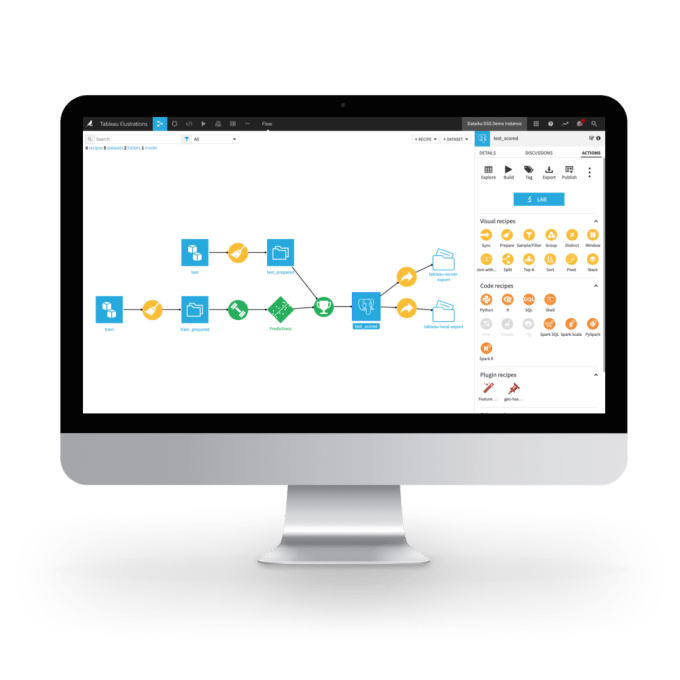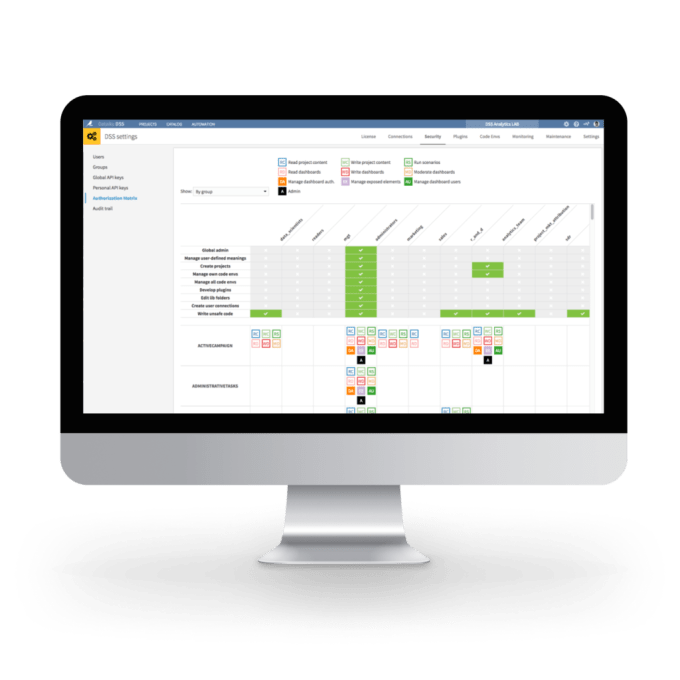By Florian Douetteau
We often hear organizations loosely throw around the terms data-driven, analytically empowered, or even an AI organization to describe what they desire to become. But what does it actually mean to be an “AI organization?” Have you ever heard anyone say they wanted to be a fax-driven organization or a phone-driven organization? Probably not. According to Jeff McMillan, Chief Analytics and Data Officer for Morgan Stanley Wealth Management, AI is a tool just like a mobile phone and the internet — it shouldn’t be a goal in and of itself but, rather, another tool that organizations can (and should) use to enhance their decision making.
AI should be an everyday tool (and its use an everyday behavior) but, in order to actually make an impact, it needs to be wholly embedded into the organization’s operating model. Further, it has to be ubiquitous and not siloed away in random, ad-hoc teams or processes and, lastly, everyone needs a way to access it autonomously. But how is that done in practice and in a way that makes sense for the business’s long-term trajectory and strategic objectives?
1+1 is greater than 2
To begin, there are many tensions that exist across today’s organizations that thwart their ability to incorporate data and AI into the organization at large — rationality and creativity, individual and collective, and control and agility, to name a few. It’s important to note that each element of the unique paradoxes are inextricably linked. If organizations focus on just one element (i.e., just the individual or just the collective) they can only get so far. But if they do both at the same time, instead of being forced to choose between one or the other, organizations can unlock exponentially more value from their AI initiatives.
When it comes to rationality and creativity, for example, often these two sides are in conflict — the rational tech side seeks to deploy and optimize projects and the business side aims to interpret and apply results. Instead of solely focusing on creativity and innovation or only worrying about execution, organizations that find the balance between the two can use data to unlock new levels of creativity while simultaneously being able to focus on execution and achieving business results.
With the individual and collective paradox, by empowering each individual with the training and education to continuously upskill and be included more regularly in analytics processes, those data-informed employees will be able to make more decisions with data and, ultimately, serve the company’s collective purpose.

Image Credits: Dataiku (opens in a new window)
In order to make these elements an organic part of every organizational process and project over time, organizations need to transition from chaotic, ill-defined data science projects to the deliberate, systematic inclusion of data and AI throughout the organization. When embarking on this journey to systematic, everyday AI, organizations need to strike the proper balance between control and agility.
First, people across the organization need to be able to access data to do their jobs better but, to prevent a free-for-all, guardrails are needed to ensure the right people (with the right permissions) can access, read, or make changes to a project, access different datasets, or reuse various project steps for one of their own projects. Simultaneously, though, too much control makes the whole process counterproductive and frustrating for core contributing team members.
Use guardrails to maintain the balance
So how can teams reach that middle ground? They can be sure to do the due diligence to manage risk and ensure compliance at scale across the organization by:
- Enacting permissions management (as mentioned above)
- Creating logs for user access and activity (helpful for both troubleshooting and compliance with internal controls and external regulations)
- Putting enterprise-level security measures in place (i.e., documentation, change management, rollback, and monitoring),
- Managing how data and models are being used
For the latter, it is critical to use well-defined processes and frameworks to ensure that all model management and monitoring considerations have been addressed at the correct point in the model lifecycle and that “a full and accurate record has been kept.”

Image Credits: Dataiku (opens in a new window)
On the flipside of the coin, the controls put into place by an organization will make less of an impact without infusing agility — or, how organizations set themselves up to get started and then continue on to scale the use of AI across the organization — into the mix. In the lens of AI and analytics, the notion of agility became really prominent as a concept amidst the global health crisis, as organizations used AI technology for sustained resilience during a period of economic disruption. Teams across the globe were empowered to work with data to improve their business output (think faster decision making, rapid project iteration, and higher levels of productivity).
As alluded to above, agility comes down to being able to adapt and pivot in future times of uncertainty. Organizations can use technology to generate benefits through software (like Dataiku) such as:
- Enabling people across departments and job functions to access data and work together designing, deploying, and managing projects in a central location
- Facilitating consistent model management to create transparent and repeatable AI programs
- Streamlining work processes via prebuilt components and automation

While it may take time for an organization to accept the reality that AI isn’t a flashy solution that will completely transform their business overnight but an everyday tool meant for everyone’s use, one thing is clear: Organizations are not free from tensions that require a delicate balancing act. Companies shouldn’t stack them against each other or eliminate one so it’s no longer part of the picture but, rather, connect them all to execute on all fronts with AI.